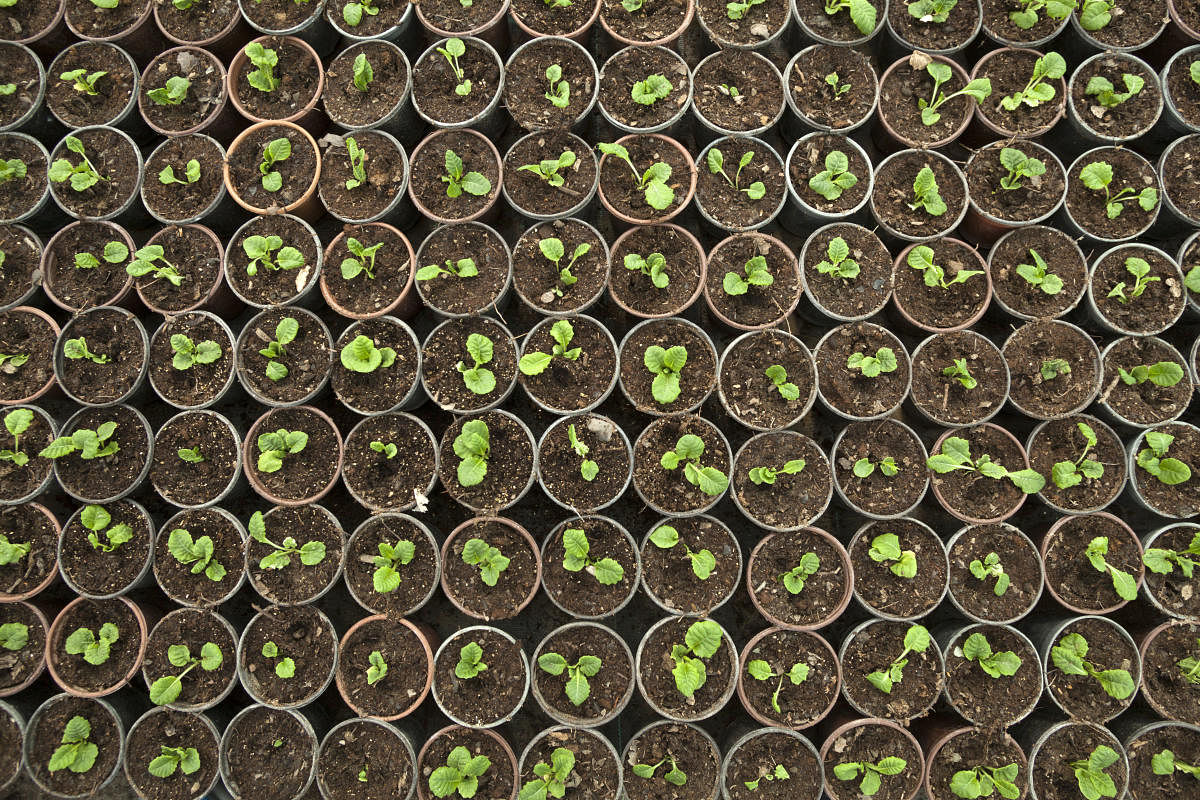
Seeds are ambitious. They seek new places to grow and thrive. Some seeds stick to the feathers of birds that visit the plant and ride on them. Some seeds, consumed by birds and grazing animals, pass through the digestive system to reach a new place. Some develop adept wings to fly. Some drift in the water for nearly three years until they wash up on a beach. Some seedpods explode and seeds (like missiles) travel a distance to land in a new place.
My earliest memory of watching seedpods scatter was of Crossandra infundibuliformis, commonly known as kanakambara/kanakambari. It explodes with a loud noise while dispersing seeds and is therefore called the Firecracker Flower. Some other common plants that disperse seeds are Butterfly Pea, Buddha Belly, Balsams, Impatiens, Yellow Bauhinia, and Calliandra.
In 1963, while excavating Herod’s palace in Masada, archaeologists discovered a jar of palm seeds. Forty years after unearthing them, scientists grew a few into palm trees. At the Old Summer Palace in Beijing, a blooming Sacred Lotus attracts tourists; for a reason. The lotus bloomed from an ancient seed, nearly 1,300 years old. One of the most significant discoveries was in Siberia, on the banks of the Kolyma river. Mature and immature frozen seeds belonging to Narrow-Leafed Campion were found in squirrel hibernation burrows, 125 feet below the ground. They were 32,000 years old, kept safe by permafrost. Even though humans have spent tens and thousands of years with plants, how long a seed can stay alive and viable, remains a mystery to us.
Preparing the soil
What is the best season to seed a garden? In India, it is Spring(February/March). Whatever sort of garden you would like to grow, make sure you have adequate sunlight and space for plants. A soil mixed with compost and sand is ideal for cultivation. While the soil absorbs the moisture, the compost provides essential nutrients. The sand keeps the layers porous and helps in draining the excess water.
Mix the soil, compost and sand thoroughly. Make sure it is powdery to touch. If you are transferring it to pots, prepare the pot. Ensure that there is a drain hole at the bottom for excess water to leave. Layer the bottom of the pot with pebbles for nearly an inch. Top it with a layer of sand. Finally, fill three-fourths of the pot with the soil mixture. There is a reason for layering it in this method. When you feed water, the upper and middle layer will absorb maximum water. The rest flow down through the sand and pebbles, preventing water accumulation.
Choosing the right seeds
You have a variety of seeds to choose from if you are buying from a store. Choose organic seeds for a good yield. Once you have grown a cycle of crops, you can harvest seeds for the next season. If you have unused ones, you can preserve them by sealing them in a paper cover and placing them in an airtight box. Store them in a dark corner of your garden cupboard.
Before you begin, it is essential to know how tall and wide the plant will grow. This helps in sowing the seed at an adequate distance. If you are unsure, sow seeds six to eight inches apart till the seedling stage and replant later. Use your finger and draw a line or make a hole in the soil. Drop a few seeds in the hole or in the middle of the line. Now cover with a layer of soil as thick as the seed. If you sow them too deep, the germinated seed will be under the ground for too long, unable to harness sunlight for photosynthesis and will die. Big seeds like beans and peas are sown deeper. Sprinkle water using a sprinkler or a sprayer to wet the soil. Keep the soil moist until they germinate.
If you are not sure about the quality of seeds, you can germinate them before sowing. Seed germination is similar to sprouting legumes for a salad. Soak the seeds for eight hours. Drain the water. Spread them on one side of a wet cloth, fold the other half over, and place it in a warm place.
Within a few days, germination will begin. You can eliminate the un-germinated seeds and transfer the good ones to the soil. These are some of the basic rules of selecting a seed and preparing the soil. In the next column, we will see how to grow a simple vegetable garden.
Until then, happy gardening. Explosive cheers from Kanakambari!
Motley Garden is your monthly pot-pourri of observations and lessons from gardening and nature.
The author is a botanical artist from Bengaluru. You can find her on Twitter and Instagram as @neelavanam